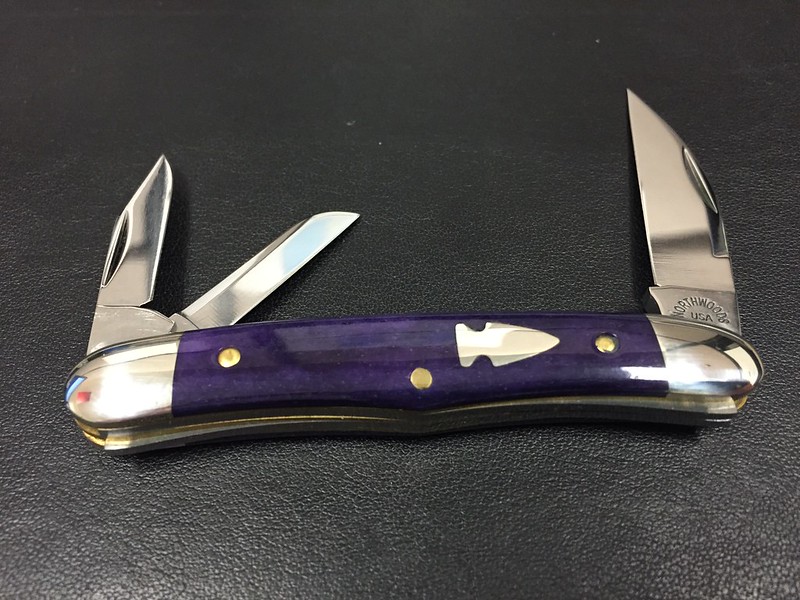A couple of points need to be made here I think.
GEC is making knives the way they used to be made, using the same old materials. That means among other things, that they grind the blades right - read that THIN. The effect of this is that they and the old (quality) knives could cut pretty efficiently even if they were/are not shaving sharp. A significant percentage of old time knife users valued thin blades that would cut. They had other tools for prying. (A pretty wise man once said that a knife is the most expensive and least effective pry bar that you will ever own.)
A lot of knives today are being made with blades that are in my opinion too thick, maybe to accommodate people who pry a lot and rarely whittle.
The Rough Rider knives are a bit thick. They do come useably sharp but not whittlin' sharp. My motto is: "If I can't shave with it I can't carve with it." It just isn't edge sharpness that counts though. The edge has to be thinned before it will cut wood well, so any knife that I am going to use for whittlin' will have its edge worked on a stone at 10 degrees until a burr (wire edge) is formed, and then done on the other side until the wire edge is formed again on the other side. After that the process may be repeated on a finer stone (1000 grit). All of this with fairly firm pressure. Then a few light stokes are taken - at the same 10 degree angle on each side until no or very little burr can be detected. The final step is to strop on a leather or even better, denim strop charged with white or green buffing compound - again with firm pressure - at least 75 strokes per side.DO NOT FLIP THE KNIFE AT THE END OF THE STROKE. Flipping, unless the blade is flipped over on its spine will result in a rounded edge, because the person doing it will anticipate the flip, and turn the knife up almost vertical while it is still in contact with the strop. This is counterproductive. Don't flip, or even give the blade a little flourish at the end of the stroke, just fanatically hold as close to the 10 degree angle for the entire stroke and give it 75 or so on one side and then the other. At the end of this procedure you will have a blade that will easily shave, and with which it is possible to do good whittlin work. When the edge is lost after some whittlin', 20 strokes per side on the strop will restore the edge. This can be repeated on 30 or so occasions - maybe more - until you notice that the knife needs to be stropped about every 5 min. Then it is time to freshen it up on the stone again.
If the angle is a little steeper, say 12 or even 15 degrees, this will still work.
Now back to those old style thin blades: They could, for everyday work be sharpened at a pretty steep angle - maybe even 20 or so degrees, and because of the thinness of the blade they would cut like crazy. Because of the steepness of the edge, they would keep cutting like crazy for a long time. For most knife users this works well.
I still hone my 38 and some of the vintage knives I use, at 10 degrees, but that is because on the subject of whittlin' I am a bit of a fanatic (OK a lot of one), and I need my edges to cut with minimal pressure. I have to re stop a lot. I don't care. It is worth it, and stropping is not hard.







